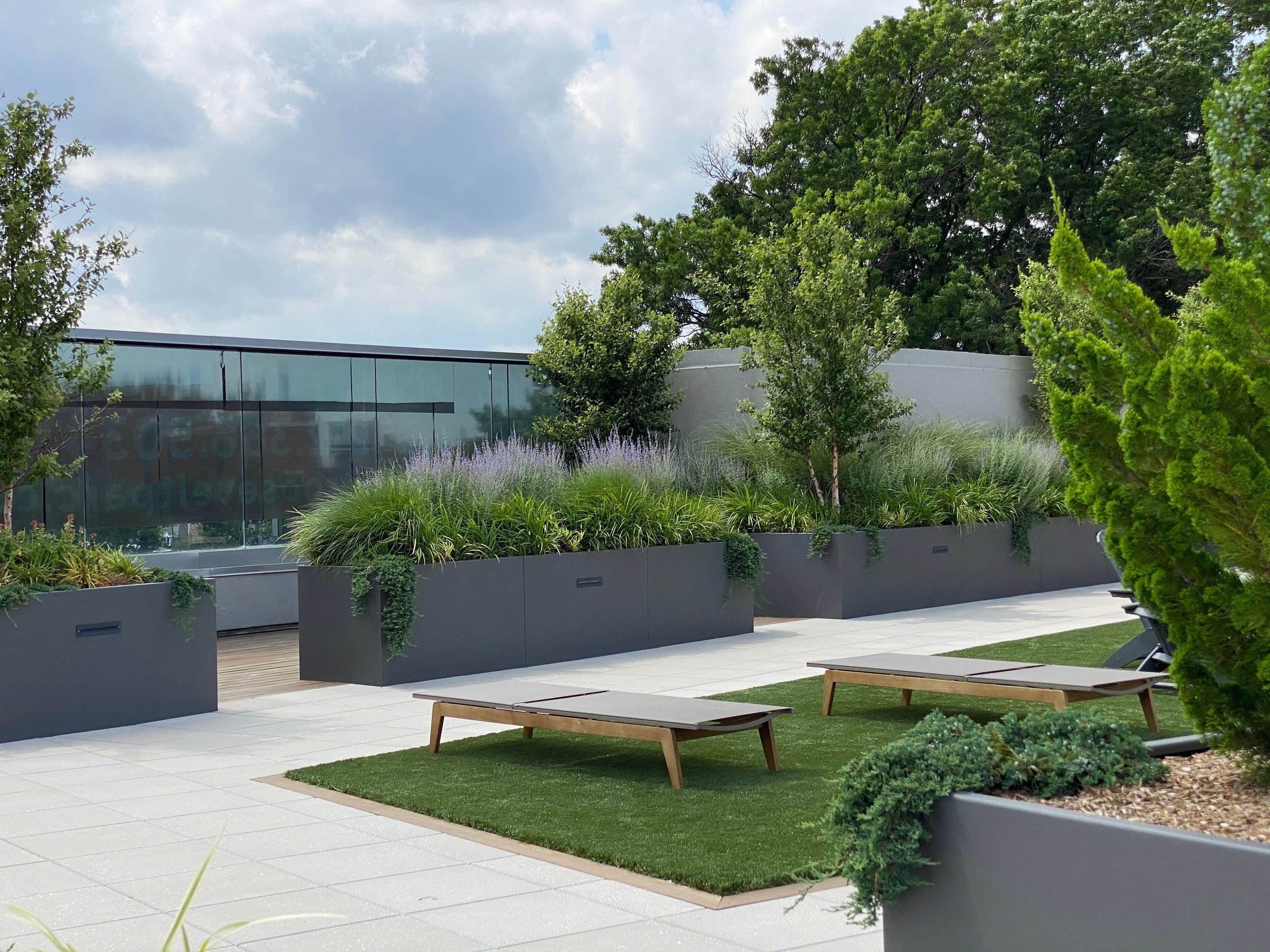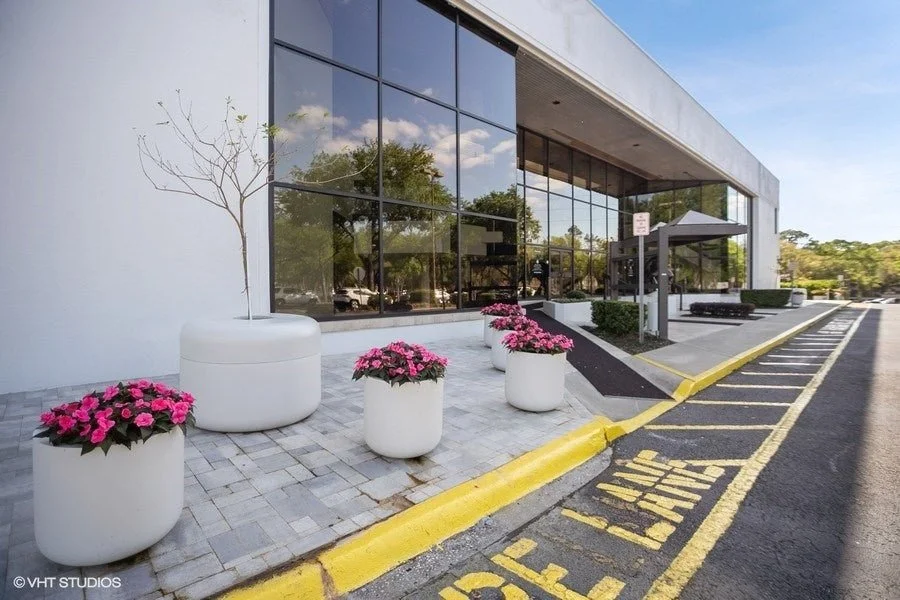Why Add Plants? Part 4: Why This Report Is So Important to the Green Industry
When consumers really understand the well-being benefits associated with people-plant interactions, they begin to realize plants are a necessity — rather than a luxury or a decorative afterthought.
For exactly this reason, the research we’ve been highlighting in this series* is unbelievably important for our clients and the green industry as a whole.
And, in this final installment of the four-part series, we’ll do our best to explain just how pivotal understanding and leveraging this research can be for your business.
*Dr. Charlie Hall and Melinda Knuth, both at Texas A&M University, have compiled hundreds of peer-reviewed studies, and PureModern has pulled some of the big ideas from that compilation and other pieces of research for you.
Part 1: Emotional and Mental Health Benefits of Plants
Connect Modular Planters at Roosevelt Parc in Jackson Heights, NY
The Cold Facts
In each article, we’ve outlined some statistics and what we’ve been calling “cold hard facts”. This article will be no different — except now we’re talking more about your business than the plants themselves.
The green industry is in the mature portion of its life cycle. This means consumers are likely to trade off or cut spending on green items when their budgets tighten. Not the best news, right?
But let’s focus on the fact that information is power.
When we recognize that this trade-off is looming, we can do something about it.
We can admit that the current value proposition of selling high-quality products at reasonable prices is simply not compelling enough for your target market.
Your value proposition must become more compelling. That’s where this research can be a game-changer for your business.
To enhance your value proposition, we urge our clients to leverage the research in the first three articles (about the benefits consumers can enjoy by purchasing greenery). And here’s why:
Studies show that articulating benefits in a targeted manner to your particular end-consumer can have startling results on your bottom line (Behe et al. 2014, Khachatryan et al. 2018, Knuth et al. 2018, Khachatryan et al. 2017, Rihn et al. 2016, Khachatryan 2014).
84% of companies that focused on the consumer experience saw increased revenue (2017 Global CX Benchmarking Report). Today’s consumer wants information and proof that their purchase will move the needle for their quality of life. With the studies in our previous three articles, you can provide the experience they’re looking for.
PurePots Fiberglass Planters at SCANDesign in Altamonte Springs, FL
An Opportunity to Elevate Value in the Eyes of Your Customers
You marketing experts out there know that the following five attributes heavily contribute to a consumer’s purchasing decision:
Quality
Price
Service
Convenience
Selection
But consumers calculate value by weighing benefits relative to cost. Therefore when you emphasize the benefits, you essentially elevate the perceived value in the mind of your customer.
There’s no funny business here. It’s completely ethical. After all, these benefits are backed by legitimate research.
But there is a touch of magic…
This information puts a significant opportunity to differentiate your business in your lap — because here’s the thing: very few of your competitors are reading these reports and these articles.
And very few of your competitors are going to invest in leveraging this information.
You, on the other hand, can cite the following proven economic benefits (Hall and Dickson 2011) that your clients can enjoy just by adding greenery:
Help draw customers to shopping districts.
Reduce shopper stress while they are there.
Enhance overall curb appeal.
Boost apartment and commercial building occupancy rates.
Increases revenue from tourism.
Create local jobs (from various landscape design, installation, and maintenance activities).
Increase residential and commercial property values.
Even reduce the costs of street repairs from the reduced temperatures resulting from shaded roadways and sidewalks.
When the consumer perceives an increased product value, brand resonance and customer commitment are positively impacted (Qiao et al. 2022).
In other words, by bringing the above benefits (and others highlighted in our first three articles in this series) to the attention of your clients, you’re going to elevate perceived value, deepen brand loyalty, and see more repeat business.
Modern Elite Cube Planters at Southcentre Mall in Calgary, Alberta-Canada
Leverage Value to Drive Profitability
Once you’ve differentiated your business and your brand by elevating your value proposition, customers become willing to pay more.
It’s something called the price elasticity of demand.
Studies show that today’s consumers are spending time in the earlier stages of the purchasing cycle. So they’re searching and learning before they buy.
They’re reading blogs. They’re seeking information posted on social media outlets. They’re begging brands to connect the dots between how a company’s products or services will improve their social, physical, and psychological well-being.
At the end of the day, these consumers are willing to pay a premium for products they believe will enhance the quality of their life.
Modern Elite Metal Planters at BXV Villa in Bronxville, NY
Learn More
Businesses want to enhance results. And people want to enhance the quality of their lives.
So whether your next design project is commercial or residential, planters are an innovative and economical way to deliver exactly what your clients need.
Innovative designers are helping clients understand that quality of life is a highly compelling value proposition. Use this research to stay ahead of the curve.
For help selecting the right plants and planters for your next project, get in touch with us today. We’re here to help!





